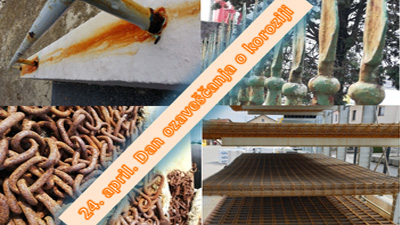The World Corrosion Organization has declared April 24 as Corrosion Awareness Day. The growing population with the need for modern and high-tech technologies is increasing the consumption of basic technological metals such as iron and steel, copper, aluminium, zinc and nickel. The use of metals is necessarily related to corrosion protection, as metals are subject to corrosion in all environments. The cost of corrosion and related measures is huge globally, reaching $ 2.5 trillion per year (3.4% of GDP). The largest share goes to infrastructure and transport. It is generally accepted that 15-35% of the cost of corrosion ($ 370-870 billion) per year could be avoided through appropriate corrosion mitigation approaches. It further worries that access to metals in the future is also limited by the depletion of natural ores, as forecasts show a 2-6-fold increase in demand by 2100. Strategies to promote sustainable material cycles such as the circular economy and the 3R concept must become our guiding principles. At the Department of Physical and Organic Chemistry, we actively focus on strategies for extending the life cycle of metals with contemporary corrosion protection, thus contributing to reducing the gap between high demand and resource availability.

